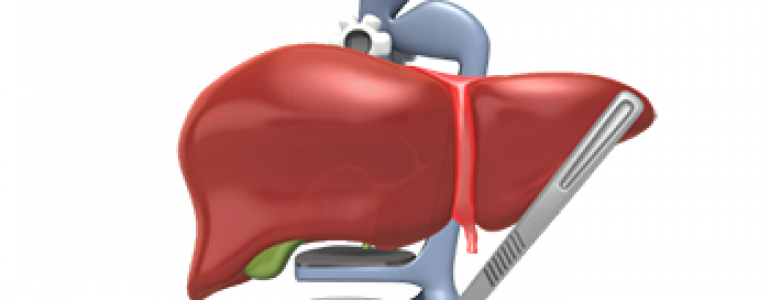Zane Scott, Vitech Vice President of Professional Services
I don’t usually write blogs from the first person point-of-view. It’s not my style. But the past two weeks brought about a conjunction of professional and personal topics that demanded a personal approach.
On Saturday, March 4, Dr. Thomas Starzl, 90, passed away in Pittsburgh, Pennsylvania. Dr. Starzl was a pioneer in the world of organ transplantation — particularly liver transplantation. Although kidney transplants had begun in the 1950s, Dr. Starzl was the first surgeon to attempt a liver transplant. He and his team at the University of Colorado tried that first operation in 1963. Despite the failure of that attempt, Starzl persisted, and in 1967, he performed the first successful liver transplant. Starzl would go on to pioneer advances in transplant techniques, immunology, and chimerism — the ability of the human body to accept foreign tissue without immune suppression therapy.
First, the personal. In 1991, my father received two liver transplants from Starzl’s team, which had moved to the University of Pittsburgh ten years earlier. My father’s younger brother had been a transplant recipient in Pittsburgh a year earlier. At the time of my father’s transplants, my uncle had recovered and was staving off rejection using cyclosporine – a treatment methodology which had been developed by Starzl’s program.
No cause had been identified for my uncle’s liver deterioration. My father’s liver problems came to light when he required surgery for an iliac aneurysm, and his liver function was found to be insufficient to process the surgical anesthesia. As had been the case with his brother, my father had none of the usual precursors for liver failure (hepatitis, alcoholism etc.). Ultimately, the cause of their liver failure was determined to be genetic —a rare, recessive condition known as Alpha-1 antitrypsin deficiency syndrome, which usually manifests in the lungs.
Starzl’s team readily accepted the opportunity to perform a transplant for the brother of their existing patient and investigate the connection and genesis of their liver disease. My father’s surgery was complicated by the aneurysm. It needed to be resected as soon as possible to prevent a fatal rupture. The surgeons explained to us that the new liver would be able to process the anesthetic “poisons,” but that the shock of that task would likely cause the liver to fail, necessitating a re-transplant.
By that time, the Starzl team was in the process of proving the efficacy of a new, more efficient immunosuppressant known as FK-506. Starzl had been responsible for proving the effectiveness of cyclosporine for use in liver transplant recipients. Both drugs were the product of substances isolated from soil-dwelling fungi. My father agreed to participate in a blind trial where we would not know in advance which he was selected for. He received the FK-506 and took it until his death 19 years later after its approval by the FDA for general use.
The team’s prediction came to pass and the aneurysm surgery — performed four days after the transplant — led to a second transplant, and once again we were the beneficiaries of the courageous generosity of a donor family extending to us the gift of life in the midst of their loss and grief. Their generosity and the skill of Starzl and his team had saved my father’s life three times in the space of as many months.
Many of the lessons we learned in Pittsburgh were shaped directly in a systems context. The initial obstacles to liver transplantation had to do with the position of the liver in the “mainline” of the circulatory system. Blood loss was prohibitive, clotting agents proved problematic for the lungs and heart, and success was not achieved until Starzl’s team developed a way of bypassing the liver while it was being removed and rehooked to the blood supply.
The immune system presented its own set of challenges. Cyclosporine was a major advance in the fight against the rejection of transplanted organs, and FK-506 was another leap forward. Upon its approval by the FDA in 1994 as tacrolimus, the drug became a commonly used immunosuppressant. These advances reduced the side effects of immunosuppression while more efficiently providing protection from rejection of the transplanted organs.
Toward the end of his career, Starzl studied human chimerism. A chimera is literally an organism composed of cells descended from more than one zygote. In the context of transplantation, chimerism is the ability of one person’s body to tolerate an organ or organs from another person without the suppression of the host’s immune system. If it becomes successful, it would avoid the side effects and costs of immune suppression.
Ever the forward thinker and dreamer, Starzl pursued this quest with the same determination and enthusiasm that he had given to the development of surgical techniques, cyclosporine, and tacrolimus. No doubt his work will lay a foundation on which those advances will be made.
Starzl’s death reminded me of the lessons of science and systems to which we had a front row seat in his leading-edge classroom. Circulatory, hepatic, genetic, fungal, medical, and surgical systems and subsystems danced together in a complex choreography. As Starzl wrote in his autobiography, The Puzzle People, “It was not just the acquisition of a new part. The rest of the body had to change in many ways before the gift could be accepted. It was necessary for the mind to see the world in a different way.” Not only did the work of Starzl’s surgeons, researchers, and support staff bring my father and uncle back from the brink of death for decades more of life, but it kindled in us a new appreciation of the systemic nature of the web of that life.





